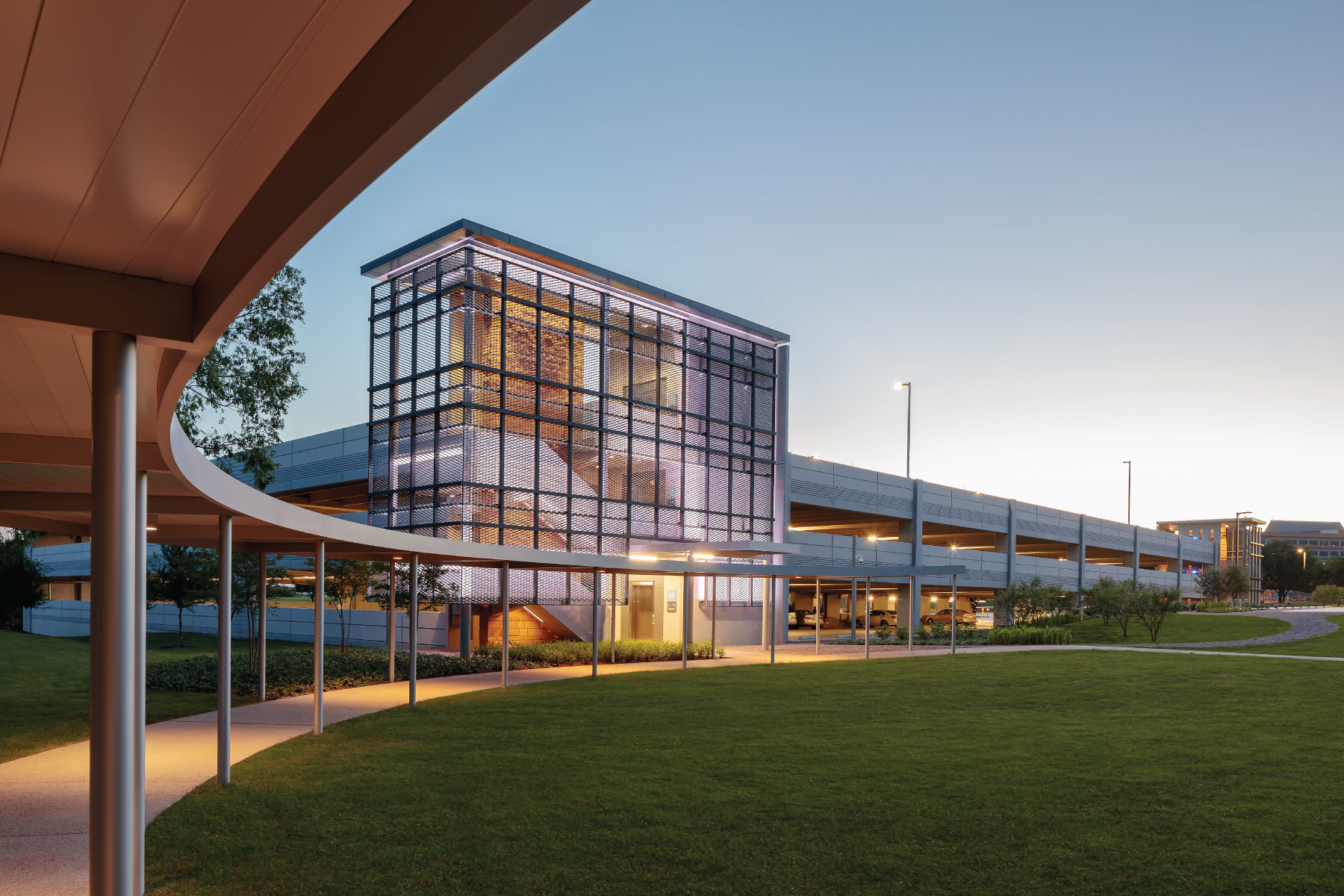Q1: Why is a parking garage screen important?
Parking garage screens provide an opportunity to transform blank utilitarian structures into architectural assets. Metal cladding enhances aesthetics by offering a finished look that blends with the surrounding architecture and creates a more cohesive neighborhood feel while concealing unsightly structural elements, reducing the visual impact of vehicles and concrete, and contributing to a more polished urban environment.
This parking garage in San Jose is clad in APEX03 expanded mesh and does an excellent job of providing a balance of opacity, hiding the chaos of cars and concrete while still allowing the structure to breathe via passive garage ventilation.
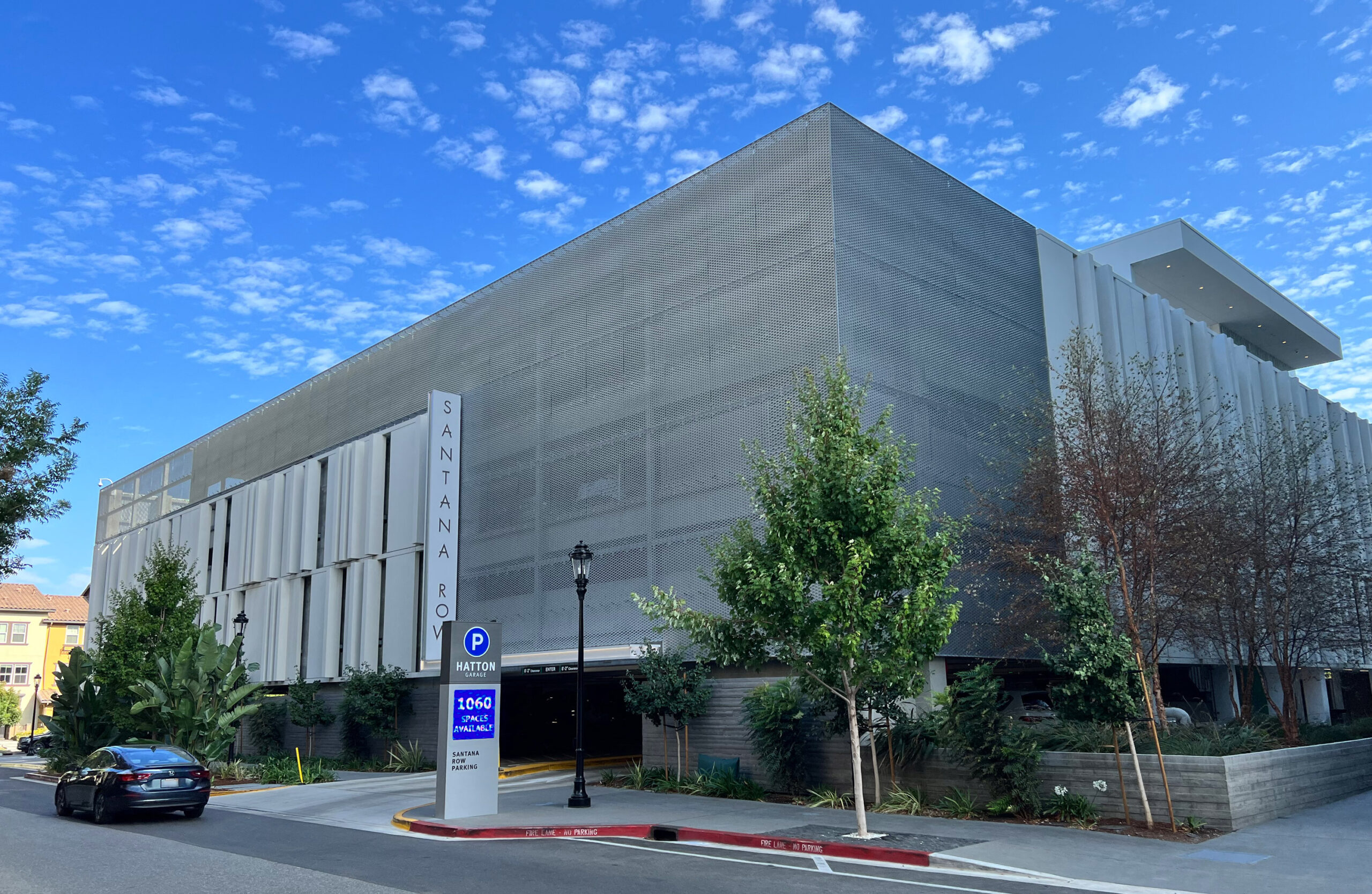
Additionally, the expanded mesh significantly reduces light pollution, which can be a nuisance to neighboring residents. Metal screening systems can also restrict pedestrian access to non-designated entry points, improving overall safety and security.
Q2: How can I design a unique parking garage screen?
- Incorporate Plant life. This San Jose parking garage uses expanded mesh as a trellis to support its growth down the front of the facade, giving it a soft, organic feeling.
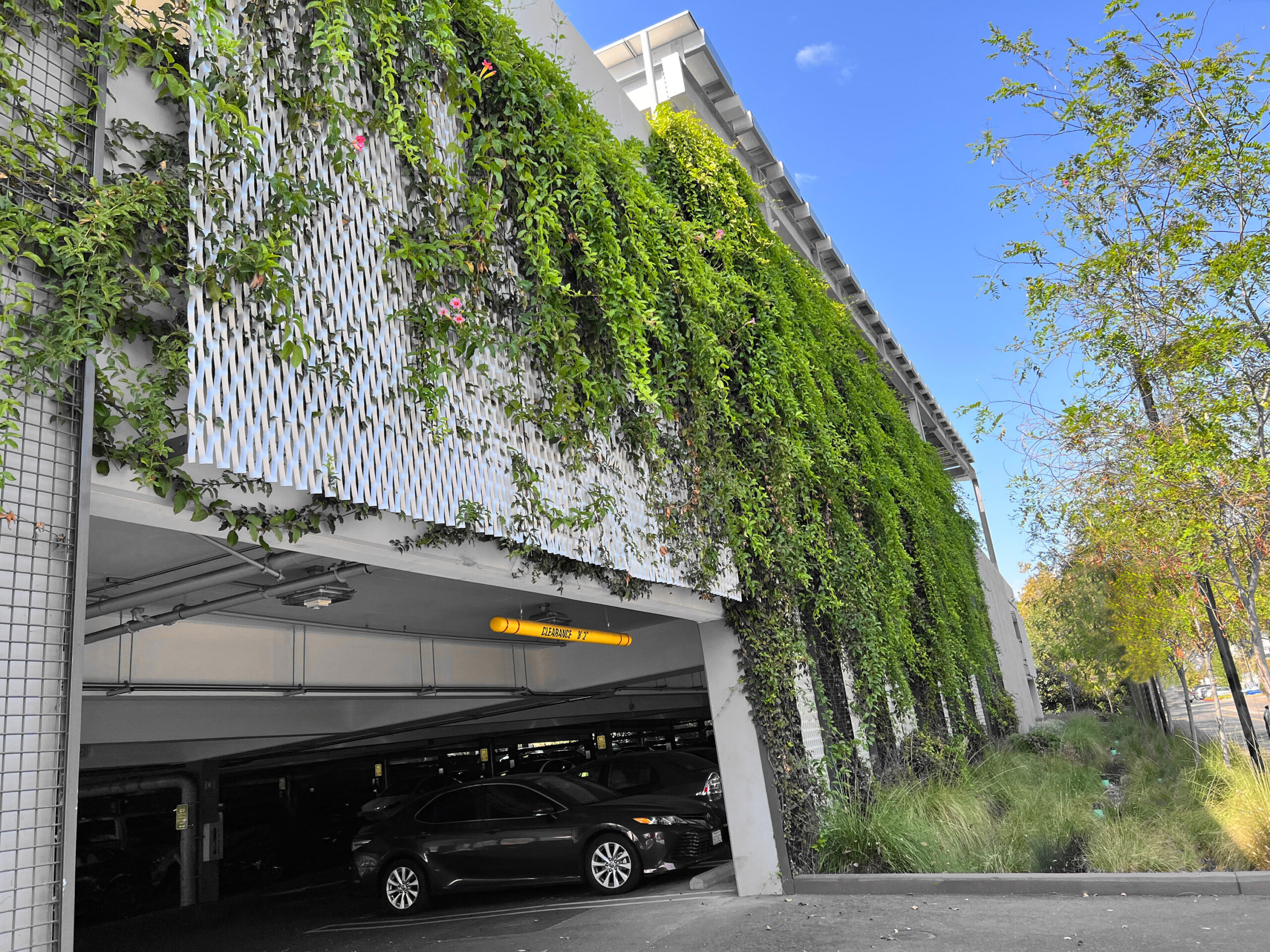
- Use image sublimation as a platform for showcasing unique artwork. Image sublimation is a powder coat finishing process that allows you to transfer artwork directly into the powder coating, providing a wide range of aesthetic solutions.
- Explore Picture PERFect image-to-perforation process. This manufacturing method converts your unique artwork and textures into hole patterns to create a one-of-a-kind surface design.
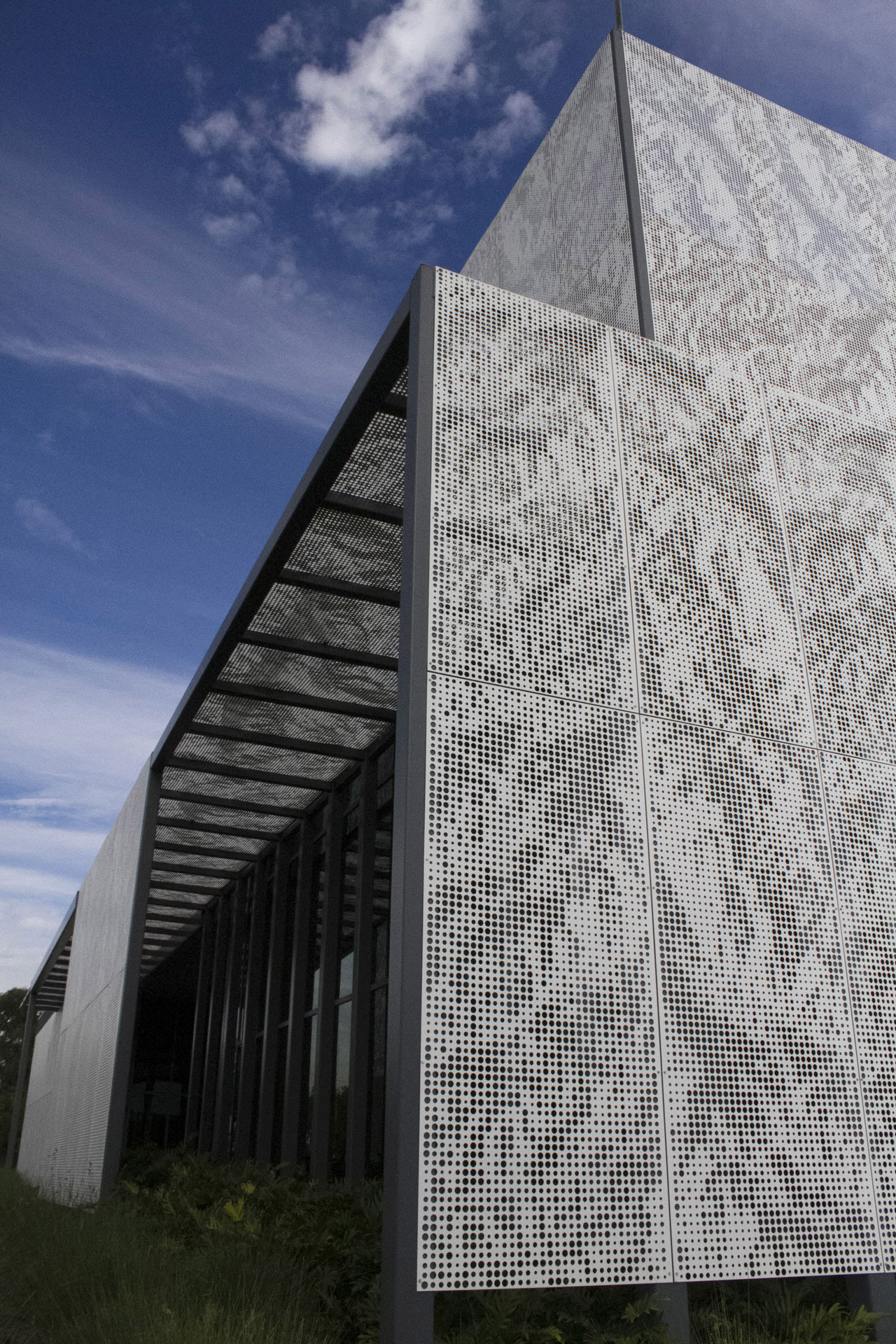
Q3: Why is aluminum a good material for parking garage screens?
- Aluminum is lightweight, reducing structural burdens, but despite its low weight, aluminum offers exceptional strength and rigidity, ensuring it can withstand harsh weather conditions and environmental exposure.
- Aluminum offers a range of manufacturing processes, like expanded, perforated, or laser cut processes, ready to deliver significant design freedom, especially when compared to wire mesh and fabrics.
Q4: How are metal cladding systems attached to parking garages?
There are various methods to attach metal cladding to parking structures.
- Break-formed (folded) perf or laser panels engineered to span from slab to slab.
- Tube and extrusion rail support systems
- Tension support cables. Below is an example of the project where AMICO’s APEX01 expanded mesh is attached to the Cooksville Go Parking Garage using this method.
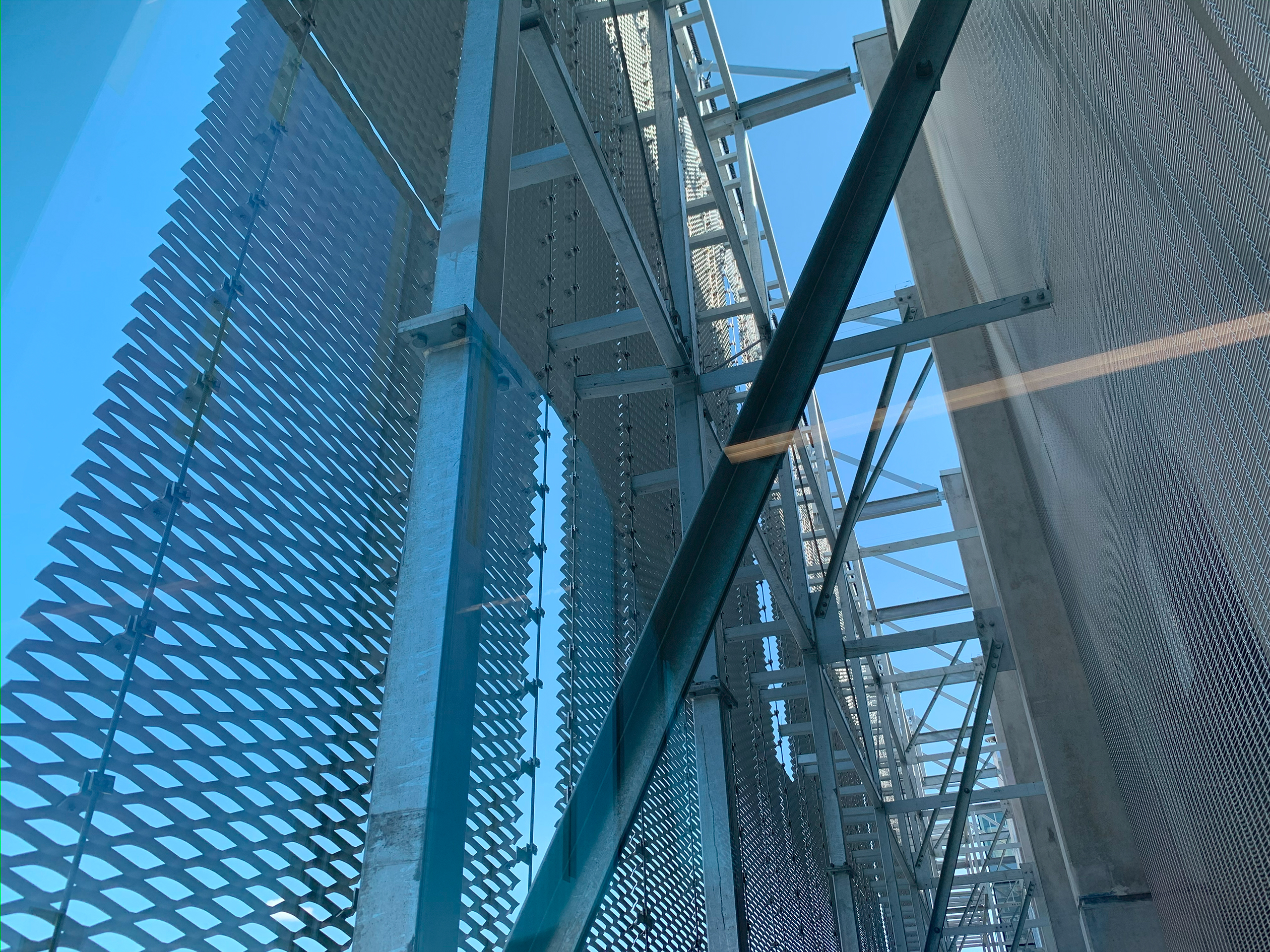
- Stainless steel stand off brackets
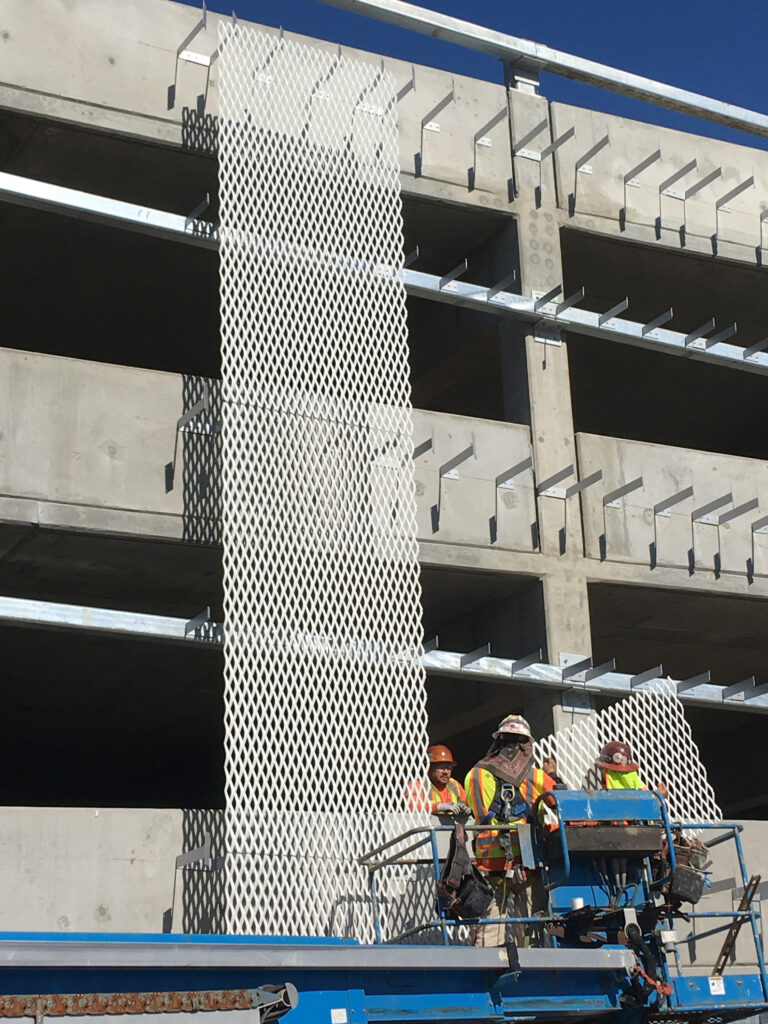
Q5: What are the advantages of metal over alternative garage screen materials like fabric mesh?
- While fabric mesh (e.g., PES or PTFE-coated materials) offers promises of low initial cost, the long-term cost is not comparable.
- Metal outperforms in durability, security, and aesthetics. Metal cladding is more impact-resistant and less prone to wear, stretching, or vandalism.
- Expanded mesh, perforated metal, or laser-cut panels require less frequent replacement and offer better resistance to fire, UV degradation, and moisture.
- Metal cladding also allows for intricate design possibilities, including cutouts, formed panels, and integrated lighting, all of which can elevate a garage into a design feature rather than a visual burden that will look dated quickly.
- Metal offers superior aesthetics. Fabric meshes tend to look temporary and cheap, diluting your impact as a designer and delivering poor value for your client.
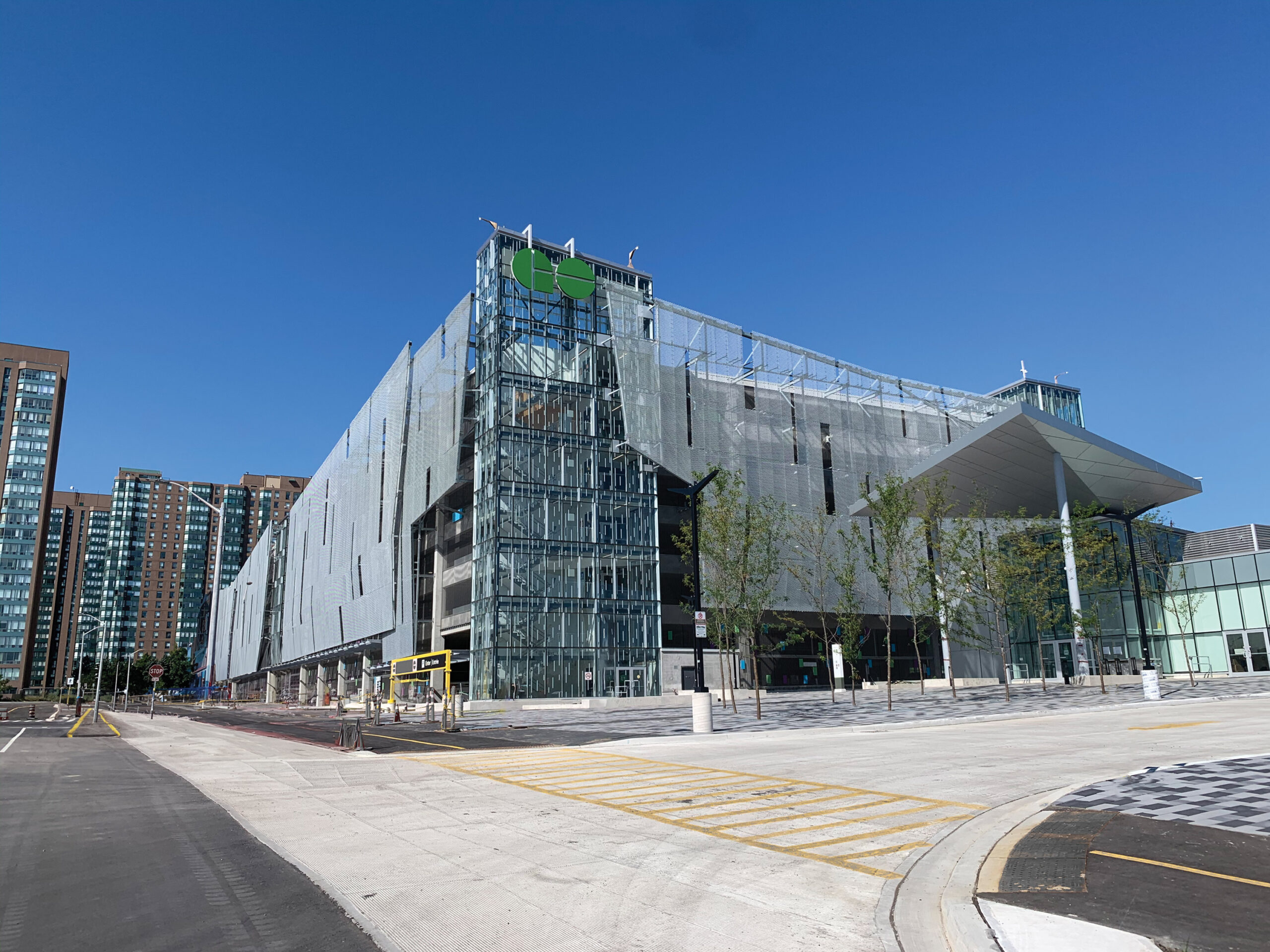
Q6: How does metal cladding contribute to parking garage structure sustainability?
- Aluminum contains recycled content and can contribute to LEED goals.
- Expanded mesh, perforated metal, and laser-cut panels mechanically fasten to buildings, so at the end of their life, they can easily be removed and isolated for recycling, even if they are powder-coated or painted.
- Aluminum is widely recycled and does not require any special programs to reclaim it.









